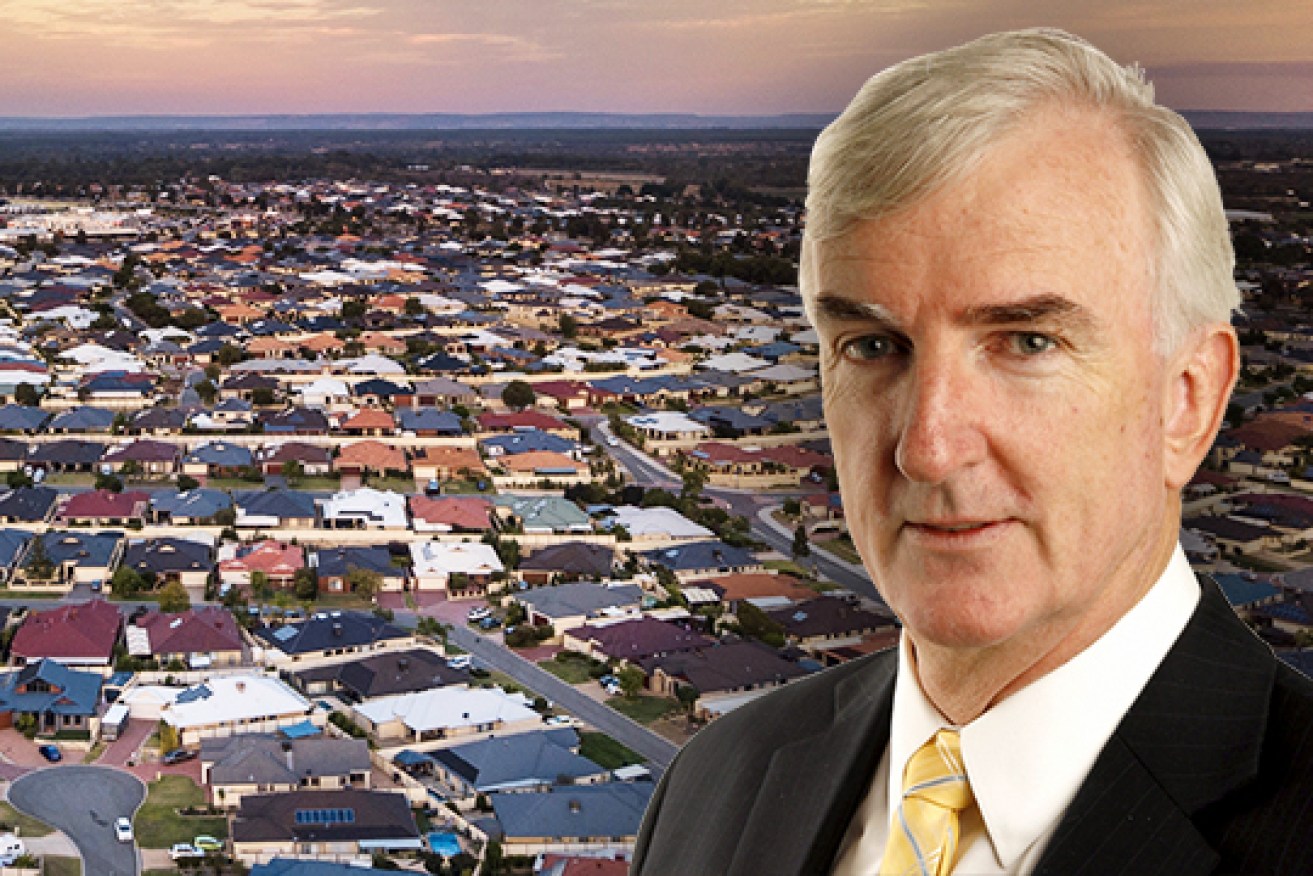Michael Pascoe: The housing rocket ride set to splutter


'Can-do capitalism' has wreaked havoc in the housing sector, says Michael Pascoe. Photo: TND
With the usual caveat that forecasting is a mug’s game, the housing price crystal ball is turning darkly cloudy.
Not today and not tomorrow but within an imaginable period, the fundamentals of weak population growth and affordability concerns are getting set to overcome the effects of cheap money, FOMO (fear of missing out) and TINA (there is no alternative).
That’s the lesson to be drawn from combining two lots of housing data published this week – CoreLogic’s home value index and SQM Research’s national property listings.
CoreLogic’s national home value index recorded a rise of 1.5 per cent last month – much stronger growth than average but research director Tim Lawless carefully made the point that the rate of growth is slowing from its March peak when national dwelling values jumped by 2.8 per cent and Sydney prices soared 3.7 per cent.
The first instinct might be to blame lockdowns in the two biggest markets for the easing rate of growth, but Mr Lawless said it was probably more to do with worsening affordability constraints.
“Housing prices have risen almost 11 times faster than wages growth over the past year, creating a more significant barrier to entry for those who don’t yet own a home,” he said.
“Lockdowns are having a clear impact on consumer sentiment, however to date the restrictions have resulted in falling advertised listings and, to a lesser extent, fewer home sales, with less impact on price growth momentum.
“It’s likely the ongoing shortage of properties available for purchase is central to the upwards pressure on housing values.”
Cue the SQM property listings count.
August recorded the lowest number of dwellings for sale since SQM started counting more than 11 years ago.
The 215,911 dwellings listed last month compares with an average of about 350,000 in the decade to November 2019.
Yes, lockdowns create uncertainty and make it harder to sell, but a glance at the graph shows a falling trend that’s been running for more than a year.
The point is that with such restricted supply last month, it doesn’t take much demand to push up prices.
The question for those punting on house prices is what happens if listings return to something like normal in a year or so – making big assumptions about our living-with-COVID world – when we have had more than two years of weak household formations thanks to negligible immigration?
Housing construction received a mighty boost from the HomeBuilder incentives, notwithstanding supply bottlenecks.
Macromonitor expects housing construction to peak this financial year and then tumble.
Thus the next financial year could be starting with extra stock but few extra people demanding it.
There is, of course, no such thing as an Australian housing market – there are several thousand housing markets in Australia.
Different regions, different cities, even different parts of individual towns and suburbs can tell different stories, but the big drivers of the extraordinary price growth for most housing have been broad.
There are plenty of housing bulls not phased – for now.
ANZ is the latest bank to up its forecast, predicting another heady 20 per cent growth this year.
That’s beginning to look rather brave.
CoreLogic’s Mr Lawless said the August performance meant housing values were up 15.8 per cent over the first eight months of the year and 18.4 per cent over the past 12 months.
“In dollar terms, the annual increase in national dwelling values equates to approximately $103,400, or $1990 per week,” he said. “In comparison, Australian wages are rising at the average annual rate of 1.7 per cent.”
The average Australian dwelling has been appreciating by more each week than the average Australian male in full-time work gets paid.
As a nation, we’ve become used to about 60 per cent of our population growth coming from immigration.
Take that away for a couple of years, and even the RBA’s cheap money eventually confronts a more powerful fundamental.
The long history of Sydney housing in particular tends to be a rocket ride, followed by a dip and then a long plateau.
The next couple of financial years are set to be interesting.









